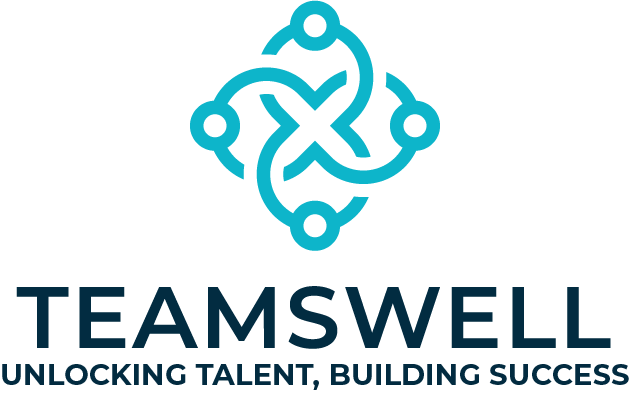If your LinkedIn profile isn’t opening doors, it’s usually not because you’re “not good enough.” It’s because the signal your profile sends is weak, unclear, or misaligned with how recruiters search and how LinkedIn now surfaces candidates.
Below is a practical, zero-fluff playbook you can use today. It reflects the latest shifts on LinkedIn—especially AI-assisted job search, verification, and skills-based matching—so your profile tells a stronger story to both humans and algorithms.
1) What changed on LinkedIn (and why your old playbook underperforms)
- AI job search & applications. Premium members can now describe their ideal job in plain language (“remote brand manager in CPG, mid-level, growth path”) and LinkedIn’s AI returns matches; it can also draft tailored cover letters and résumé tips that align with postings.
- Skills-based hiring accelerates. Recruiters are leaning harder on skills signals vs. pedigree, and LinkedIn’s own recruiting products center on skills graphs and filters. If your skills aren’t explicit and validated, you’ll be invisible to these searches.
- Verification matters. LinkedIn now supports free identity and workplace verification and is tightening verification for recruiters and executives to reduce scams. Verified profiles are easier to trust, and some searches can prioritize verified accounts.
Translation: keyword-stuffed summaries and vague “responsible for…” bullets won’t cut it. You need clear, verifiable skills signals and intent.
2) Your 90-minute LinkedIn overhaul
A. Headline = Promise + Function + Edge (10 minutes)
Think beyond your title. Combine role, specialty, and outcome in ~70–90 characters:
- “Demand Gen Manager | $5–10M pipeline growth in SaaS | ABM + PLG”
- “Senior FP&A Analyst | SQL + Power BI | Margin expansion & unit economics”
(LinkedIn itself recommends headlines that go beyond job titles.)
B. About (Summary) = 5-line value narrative (15 minutes)
- What you do best (1 line, specific to your function).
- How you do it (tools, frameworks, markets).
- Proven results (3–4 quantified wins).
- Keywords you want to rank for (skills stack).
- What you want next (role level, industry, work model).
Example (Product Marketing): “PMM turning complex AI features into revenue. Led 4 GTMs, $12.3M ARR added; built ICP + messaging with 40 customer interviews; shipped pricing tests (+18% ARPU). Stack: Tableau, HubSpot, Notion, SQL basics. Targeting Senior PMM roles in B2B AI/data infra; hybrid or remote.”
C. Experience = Outcomes > Activities (20 minutes)
For each role, use “Challenge → Action → Result” with numbers:
- “Inherited a $2.1M underperforming portfolio; rebuilt segmentation + offer tests → +31% CVR, +$860k net ARR in 2 quarters.”
- “Cut onboarding cycle from 21→9 days by redesigning SOP + Loom library; CSAT 4.3→4.8.”
D. Skills = Search fuel (10 minutes)
- Add 30–50 skills that match your target roles; pin the top 3 that are most in-demand in your niche. (Recruiters increasingly filter by skills.)
- Ask 3 colleagues to endorse the exact skills you’ve pinned (reciprocal works).
- Align skills with job posts you’re applying to; the AI tools compare your inputs against the posting.
E. Featured = Proof fast (10 minutes)
Add tangible evidence that reduces risk:
- 1–2 slides of results (redacted),
- a portfolio or GitHub/Behance,
- a case study post or newsletter article.
F. Recommendations = Social proof (10 minutes)
Request 2–4 crisp recommendations from former managers/clients:
- Ask them to mention specific outcomes, skills, and context (“series A SaaS,” “multi-site retail,” etc.).
G. Settings = Make recruiters’ lives easy (15 minutes)
- Turn on Open to Work (choose job titles, locations, compensation range).
- Set Job Alerts for exact keywords.
- If eligible, complete Identity/Workplace Verification (it’s free and raises trust).
3) Match the new AI-assisted workflow recruiters use
Recruiters now start by describing ideal candidates and filtering by skills. Here’s how to line up:
- Mirror the posting’s language. If a role says “SQL, Looker, cohort analysis,” place those terms in Skills, Experience bullets, and About (where true). This optimizes AI cover-letter/résumé suggestions and your match score.
- Quantify everything. AI can’t infer impact from vague phrasing. Add numbers, timeframes, and baselines (e.g., “reduced CAC 22% YoY”).
- Upload a role-specific résumé inside LinkedIn when applying; Premium’s résumé tips can highlight gaps against the JD.
4) Content that gets seen in 2025
You don’t have to become a “creator,” but a little proof in public helps the algorithm and hiring managers.
- Post 1x/week: ship a quick breakdown of a problem you solved (“How we cut lead response time 63% with one Zapier step”).
- Engage early: posts that get quality interactions in the first hour travel further. Leave substantive comments on niche-relevant posts, not generic “Great post!”
- Write for your peer+recruiter audience: frameworks, dashboards, before/after screenshots (redacted), short teardowns.
- Use Articles/Newsletters for 1–2 cornerstone case studies (then clip them into posts).
5) The five-point profile checklist
- Headline says what you do + outcome.
- About ties strengths → tools → 3–4 quantified wins → what’s next.
- Experience uses 3 bullets each, all with numbers.
- Skills (40+) mapped to target JDs; top 3 pinned; endorsements incoming.
- Verification + Featured + Recs in place; Open-to-Work correctly set.
LinkedIn now rewards clear skills signals, verified identity, and proof of outcomes—and gives you AI tools to tailor faster. If your profile isn’t getting traction, don’t start over. Tighten the signal. When your strengths, evidence, and intent are unmistakable, the right companies (like us) will find you.
